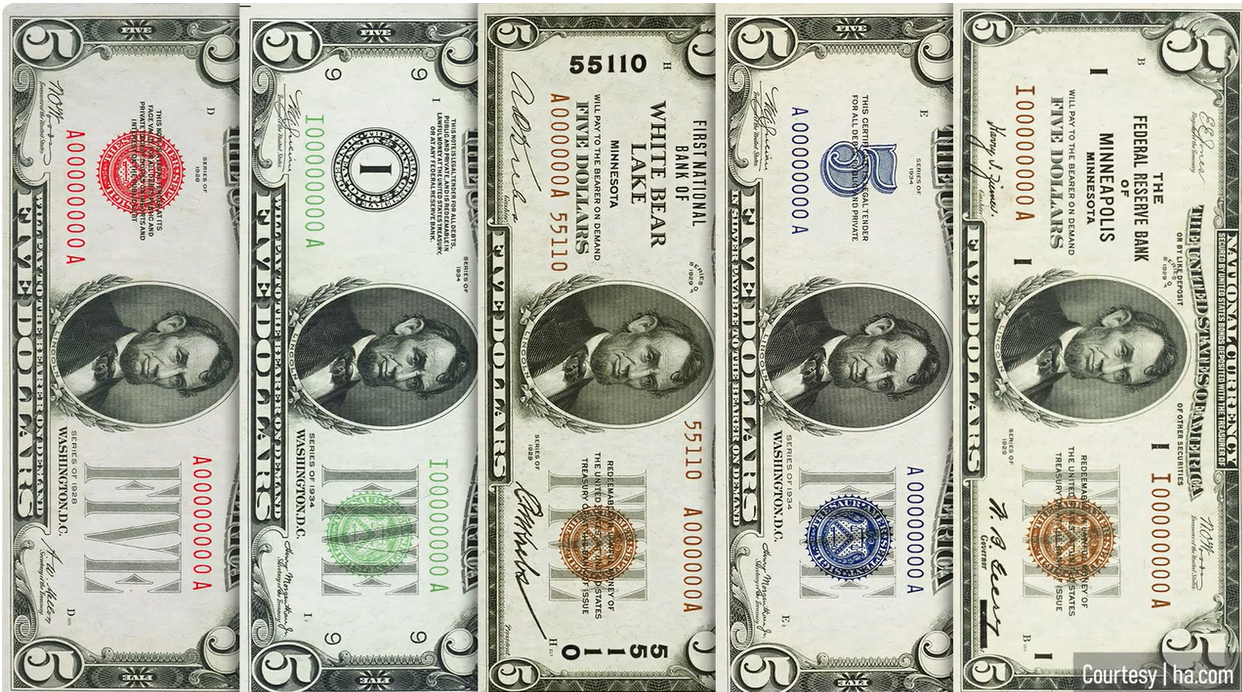Back Story:
Around 2010 I reached into my pocket and pulled out 3 five dollar bills. I rarely keep bills in a front pocket but I knew I had change from earlier in the day and I knew it was 15 bucks and change. Now we have all seen cash and we know that over time changes are made. This time however the differences where all right there.
The bills were, in order of age,
- a small portrait style (prior to 1999)
- a large portrait style (1999 to 2006)
- a larger portrait colorized (2006 to present)
As I pieced together what I was looking at I thought, "Oh, I bet my daughter would like to see this.", and put them back in my pocket.The next day I produced the bills and displayed them to her at which point she said (with a very mischievous smile), "Hmmmm, I wonder how may different styles there are?" Now she knows me all too well and just KNEW this would eat at my brain. Sure enough, I mused on it and slowly started "just looking" around on the Internet. Next thing I know I am looking are every $5 bill I get and nonchalantly started setting them to the side. At some point I found a list of the "Small sized" bills and found a way to limit the madness.
Current Status of Collection:
I have a sample of every type, every series, and examples of varients (wide, narrow, mule). I am currently working on examples of the various types of printing errors. This is broken down to 20 types and is an ongoing quest.
Quick history:
Prior to 1928 the standard U.S. size was 7 ⅜ x 3 ½, then the US Government standardized the size of the currency to 6.14x2.61 inch. This change in size was primarily to reduce the expense of printing money and well, it worked. Also in 1928 there were multiple currencies in use in the US. The United States Note (Legal Tender), Gold Certificate, Silver Certificate, Federal Reserve Note (what we use today), and the National Currency. The National Currency is of particular interest because it was issued with the banks name on it. 1929 was the last year of National Currency and the only year the $5 was printed in the new "small size" but more on this later. Lastly as a way to ease the demand on currency during the Great Depression the Federal Reserve System produced Federal Reserve Bank Notes. These are acually National Currency but instead of the banks name they list the individual Federal Reserves.
The "style" or "series" of the bills are changed with new designs or when the signatures of either the Treasurer or the Secretary of the Treasury changed. Design changes start a new Series where signatures just add the next letter to the year. Examples: The 2001 $5 was a new design (security features I believe). 2003 was again a new design. The 2003-A was based on the signature changes.

